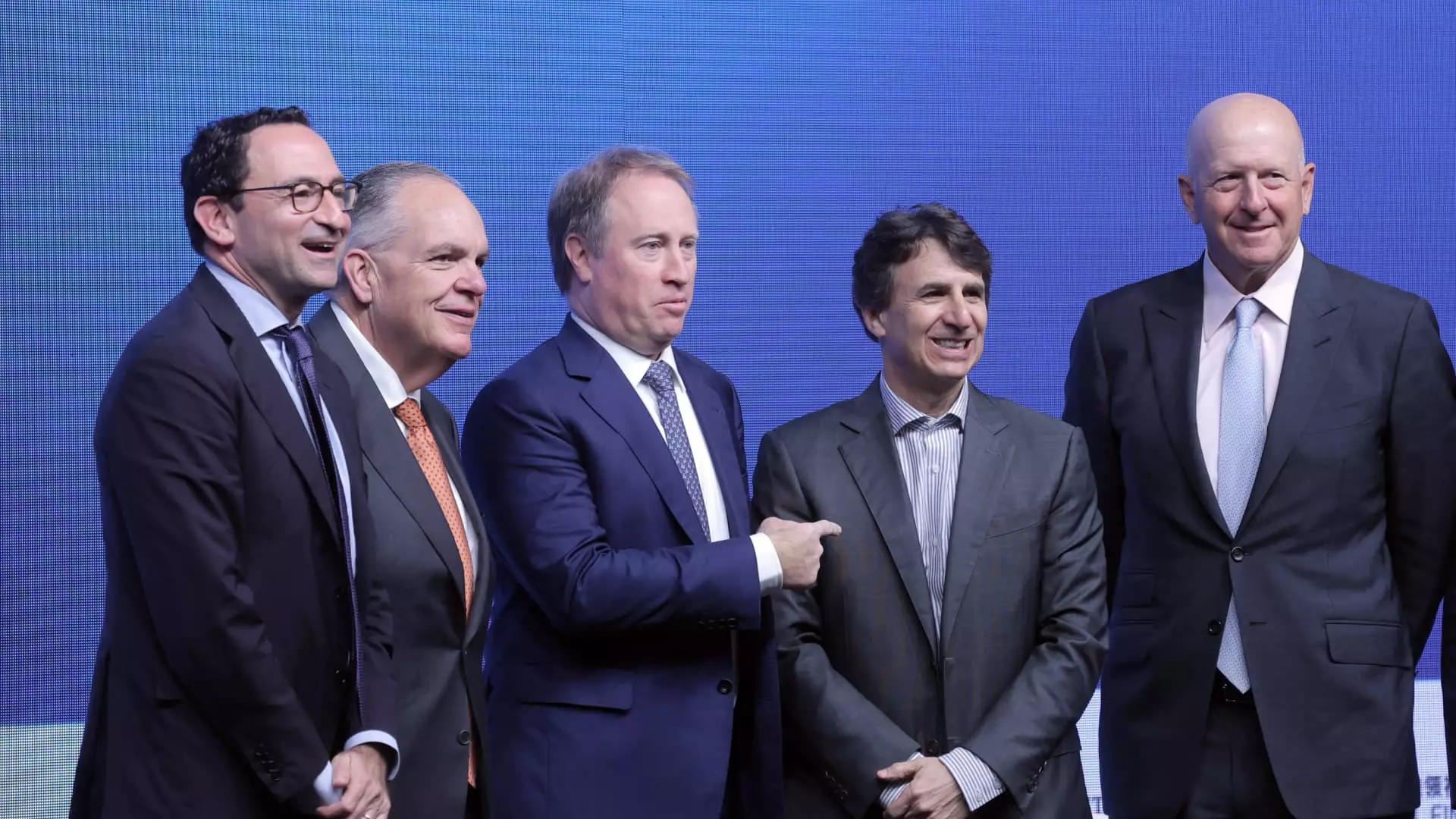The landscape of the U.S. economy is shifting dramatically, characterized by a burgeoning demand for capital across various sectors. This was a focal point during the recent Global Financial Leaders’ Investment Summit held in Hong Kong, where prominent figures in finance discussed the implications of this industrial resurgence. Marc Rowan, CEO of Apollo Global Management, articulated a compelling narrative, highlighting the confluence of factors driving this demand.
Rowan described the current moment as nothing short of an “industrial renaissance,” attributing this shift to unprecedented government spending initiatives that prioritize infrastructure, technology, and green energy investments. These fiscal strategies, particularly those established under the Inflation Reduction Act, have paved the way for renewed confidence in capital markets. As government budgets swell, the pressure is on the financial sector to respond with creative capital solutions. Rowan’s observation on the extraordinary nature of this demand frames it within a broader context of both opportunity and potential risk.
Notably, the U.S. has become a center for foreign direct investment, reinforcing its position as a global capital leader. This influx is essential not only for maintaining competitive advantages but also for fueling innovation across industries poised for growth. The CHIPS and Science Act, along with infrastructure legislation from 2021, has earmarked billions for essential sectors, signaling a robust commitment to revitalization.
A noteworthy emphasis was placed on the growing sectors of energy and data management. Jonathan Gray, President and COO of Blackstone, underscored the crucial role of data centers in the evolving digital economy, referring to them as a dominant theme within his firm. The commitment to investing billions in digital infrastructure illustrates the industry’s recognition of the need for scalable solutions to meet the demands of artificial intelligence and increased digitization.
As the world pivots towards digital-first strategies, the investment in such infrastructure becomes not just beneficial but pivotal. The panel discussions suggested that this trend toward digital infrastructure capital projects would only accelerate, requiring both equity financing and innovative funding solutions to meet demand.
Despite previous challenges—stemming from inflation, geopolitical unrest due to the war in Ukraine, and a tightening regulatory environment—the sentiment among financial leaders has shifted back towards optimism. David Solomon of Goldman Sachs noted that while capital raising activities had peaked during the COVID era, they faced a downturn due to these compounded issues. However, recent normalization of market conditions, coupled with a potential easing of regulatory measures under a new administration, may reignite momentum in capital raising.
It’s noteworthy that the infrastructure for capital allocation is becoming more resilient, suggesting a potential recovery phase is underway. Ted Pick, CEO of Morgan Stanley, asserted the overall health of the consumer and corporate sectors, underscoring their readiness to engage in capital raising as an indicator of a thriving economy. This optimism aligns with historical patterns, where robust capital allocations typically fuel mergers and acquisitions, further embedding the cycle of economic growth.
As the discussions at the summit concluded, a collective foresight among financial leaders predicted a substantial increase in capital raising and M&A activities. Solomon’s vision for 2025 reflects an anticipation of a more conducive environment for these activities. However, a prudent approach is warranted—while optimism is prevalent, inflationary pressures and market volatility continue to loom.
The indisputable intersection of government policy, evolving market dynamics, and international investment flows underscores a complex tapestry of opportunities and challenges that lie ahead. As financial leaders navigate this landscape, it will require not just agility but also innovative strategies to capitalize on the unfolding trends. The ability to source and manage capital effectively in this context will be critical for sustained economic growth and development.
The discourse at the Global Financial Leaders’ Summit revealed a pivotal moment in the U.S. economy, highlighting the critical dimensions of capital demand, the urgency for digital transformation, and a cautiously optimistic outlook for the future. Navigating this landscape will require vigilance and adaptability, ensuring that stakeholders remain poised to harness opportunities amidst an ever-evolving economic framework.

Leave a Reply